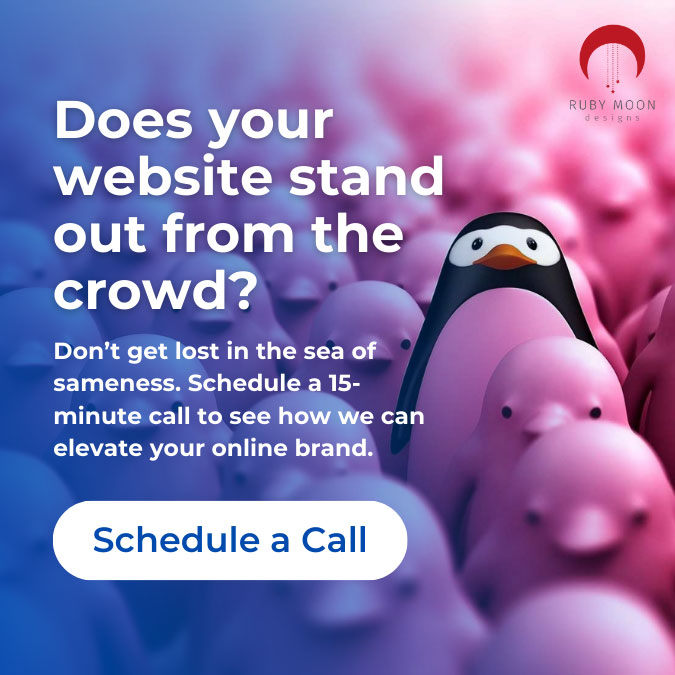In August of 2021, Google rolled out its Google Page Experience Update. This update comprises an algorithm that takes into account how happy users are when they use a particular web page.
We’ve all known for a long time that the human user is just as important as a search engine when it comes to web rankings. Now your users’ experiences will quantitatively make a difference when it comes to search engine optimization.
To understand what this update means, we are going to go all metaphorical on you. Again.
Part 1: Flashing lights and sirens
You’re sitting down to watch your favorite medical show like Chicago Med or Grey’s Anatomy. You see a patient being wheeled into the hospital by a breathless ambulance driver. What’s the first thing that happens?
The answer is not, “the patient bleeds as attractively as possible,” though that is usually the case.
The paramedics, nurses and docs shout a stream of vital statistics to one another, “Heartrate 120 palp, pressure 130/80, O2 sats 92…” These numbers let the TV docs (and you) know how the patient is doing.
When your website is delivered to a user, it possesses vitals too. Good Core Web Vitals, according to Google there are three, indicate that your website is alive and providing your users with a good overall experience:
- LCP: Largest Contentful Paint – This vital statistic measures page loading experience. Your pages should load within 2.5 seconds to get a good score. If your pages don’t load the content above the fold (information that appears without scrolling) that fast, your bored users will likely leave (bounce) or won’t interact with your site. NOT a good user experience.
- FID: First Input Delay – This vital measures interactivity. Interactivity is how fast things load from the moment your user starts clicking on stuff on your page. For a user to have a good experience, your page should have a score of about or less than 100 milliseconds.
- CLS: Cumulative Layout Shift – This vital measures how much a user has to endure things shifting around on your pages while they’re trying to read. Shifting can happen when your page programming doesn’t provide defined sizes for images or videos or when your page contains ads. Unexpected shifts hurt your reader and your score. Each page needs a score of 0.1 or less.
Of course, each of these stats is a moving target. Each of your pages will change constantly. Google recommends you hit these vitals at least 75 percent of the time to receive a “good” score.
Ways to perform CPR
An excellent, free way to discover your site’s Core Web Vitals is to run a report in Google Search Console. Not up to speed on Console? Read The Value of Google Search Console.
If your site receives poor Core Web Vital scores, fear not. Just as there is always hope on a fictional medical show, so there’s hope to resuscitate your web pages, aka URLs, IRL. (LOL.)
Google Search Console Help recommends the following basic steps to improve Core Web Vitals:
- “Prioritize.” Google recommends “fixing everything labeled ‘Poor’ first, then prioritize your work either by issues that affect the most URLs, or by issues that affect your [website’s] most important URLs. URLs labeled ‘Needs improvement’ could be improved, but are less important to fix than Poor URLs.”
- After #1, “share the report with your engineer or whomever will be updating your URLs.”
- Google recommends these page fixes:
- “Reduce your page size: best practice is less than 500KB for a page and all its resources.
- Limit the number of page resources to 50 for best performance on mobile.
- Consider using AMP, which almost guarantees good page loading on both mobile and desktop.
- Use an external test to recommend fixes to your page.”
- Test your fixes using an external test.”
- When you think a particular issue is fixed, click Start Tracking on the issue details page in the Search Console Core Web Vitals report.”
- Track your validation process.”
We’ll add a seventh step: Contact Sublime Creations for help. If you don’t have time to do the analysis yourself or don’t know where to start with AMP, give us a call.
Part 2: Signals and crossings
Once you figure out Core Web Vitals, you’ll need to address several other aspects of the user experience that are considered by the Google Page Experience Update.
Coming metaphor alert.
Pretend you’re a mile from the nearest train track. It’s two in the morning and you’re incredibly annoyed. The train engineer keeps blowing a whistle and it’s LOUD. The whistle is a signal to pedestrians and drivers that the train is nearby and crossing a road.
Web geeks call Core Web Vitals as well as the following user experience elements signals.
Each signal lets Google search engines know that your site means business and cares about your user. Improve these signals to increase user satisfaction and site rankings.
Mobile Friendliness
This signal lets users know you care about their experience on every device they own. Your website should be optimized for phones, tablets and desktops. Is it? How do you find out?
You got it. Run a test.
If it’s not, check with your developer to get your site optimized for mobile screens ASAP.
HTTPS
Is your site secure? If so, it should be served over HTTPS. Learn more about HTTPS and security from our previous blog. If you open your site in Chrome, you should see a little padlock graphic before the URL denoting a secure site. If your site is not secure, contact your web host to learn how to secure your site.
Intrusive Interstitials
What the heck is an interstitial? Simply put, an “interstitial” is content that crosses or blocks out the content beneath it. Some websites use popups that bar users from seeing content and it can be aggravating. Google’s new search algorithm wants to penalize this behavior in its intrusive forms. Google Search Central outlines a few ways “interstitials” bar users from getting what they need:
- “Showing a popup that covers the main content, either immediately after the user navigates to a page from the search results, or while [the user is] looking through the page.
- Displaying a standalone interstitial that the user has to dismiss before accessing the main content.
- Using a layout where the above-the-fold portion of the page appears similar to a standalone interstitial, but the original content has been in-lined underneath the fold.”
Google Search Central is careful to say, “Great user experience doesn’t override great content,” but with this new update, it will count. Provide your users with accessible, informational content and update it often. Happy users are happy consumers upon whom the success of your business relies.
Send a signal
Need help? Sublime Creations is here for you. We are an eco-friendly company specializing in website consultation, design and personalized training. We cater to local and small businesses. Contact us online or call (720) 443-1407 to schedule your free 30-minute consultation.




